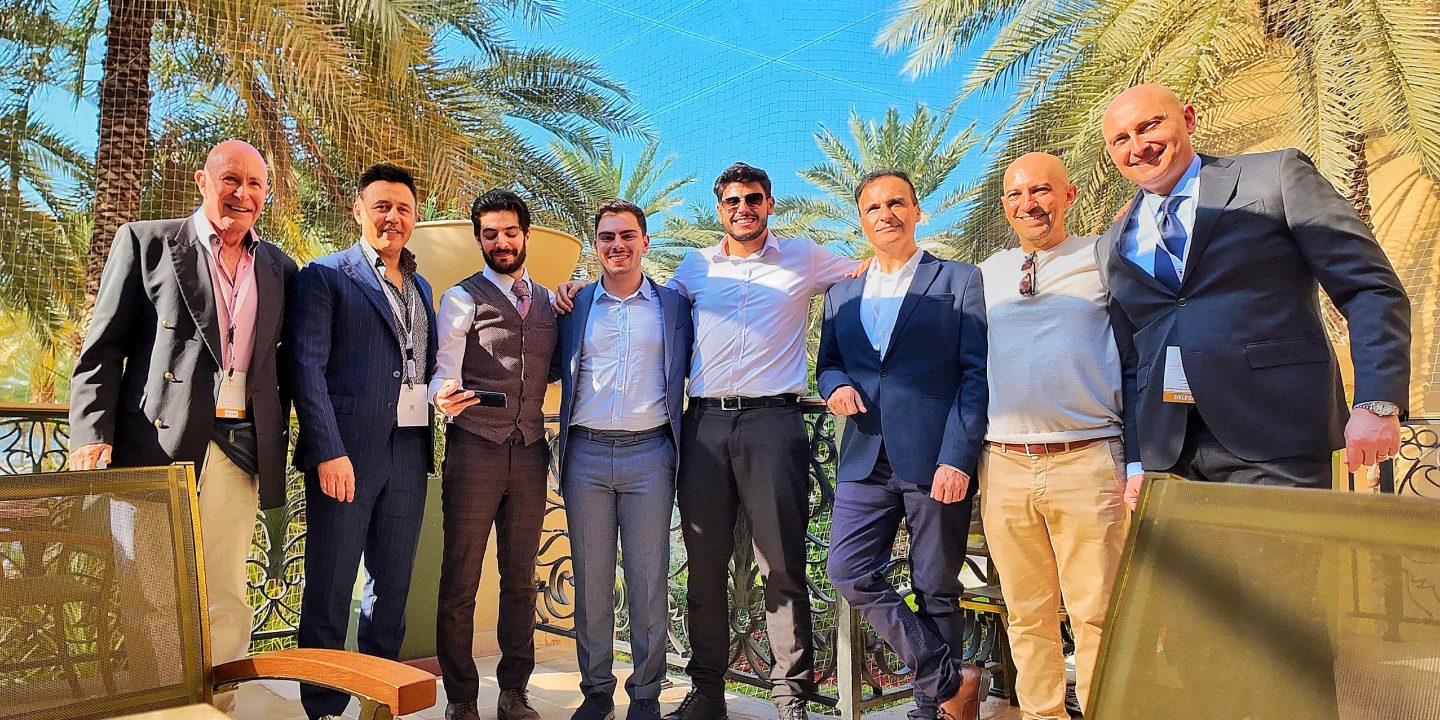
The Architecture of Impact: Foundations for Scaling Purpose Through Systemic Investing
Farhad Reyazat – PhD in Risk Management, London Institute of Banking and Finance
Citation: Reyazat, F. (2025, September 24). The architecture of impact: Foundations for scaling purpose through systemic investing. London Institute of Banking and Finance. https://www.reyazat.com/2025/09/24/the-architecture-of-impact-foundations-for-scaling-purpose-through-systemic-investing/
Introduction
The structure of a business is far more than a legal or financial technicality; it is a deep design choice that determines how value is created, distributed, and preserved across generations. Ownership and governance models shape incentives, define accountability, and set the boundaries for how capital interacts with society and the environment. In the context of systemic change, these structures can either reinforce short-term profit extraction or enable long-term resilience and impact.
In my work on Systemic Investing & Resilient Ecosystems (Reyazat, F. 2025, September 2), I argued that finance must move beyond isolated transactions and instead be designed as a living system where flows of capital strengthen ecological, social, and economic resilience simultaneously. If capital is the bloodstream of transformation, then ownership and governance are its bones: they determine whether the system stands firm or fractures under pressure.
This article explores two dominant structural models and their relevance for building an impact-driven ecosystem. The first is the foundation or trust-owned model, where mission protection is embedded through independent stewardship. The second is the dual or multi-class share model, where founders retain control through super-voting shares. By comparing these, we can assess which structures are better suited to steward systemic investment and catalyze lasting change.
2. The Case for Structural Design in Impact Finance
At the heart of impact finance lies a fundamental question: who ultimately controls capital, and toward what ends? Governance and ownership models are not neutral; they directly shape the flows of money, the incentives for managers and investors, and the degree of resilience a system can sustain in times of stress. Conventional financial markets often prioritize short-term shareholder returns, which can lead to extractive practices and underinvestment in the capacities that enable societies and ecosystems to thrive over the long term. By contrast, carefully designed structures can redirect these flows toward regenerative outcomes.
Academic research underscores this point. Studies of foundation-owned enterprises in Scandinavia, for example, reveal that such firms consistently invest more in research, resist hostile takeovers, and adopt longer-term strategies compared to their purely shareholder-driven peers (Thomsen, 2017; Hansmann & Thomsen, 2018). Ownership forms thus operate as hidden “rules of the game,” aligning or misaligning financial systems with social priorities.
This insight resonates with Donella Meadows’ framework on leverage points in systems change. She argued that altering the rules of a system or its goals and paradigms produces far greater transformation than shifting surface-level variables. Ownership and governance structures are precisely such leverage points. They are the “architecture” through which systemic investing becomes possible, enabling capital to strengthen bioregions, value chains, and social institutions rather than weaken them.
In practice, this means that structural design should be an explicit part of any impact strategy. Foundations, trusts, or dual-class mechanisms are not just technical tools; they represent different philosophies of power and accountability. If impact finance is to drive systemic change, it must treat structural innovation as seriously as financial innovation, embedding resilience and purpose into the core of enterprises and investment vehicles.
3. Model One: Foundation / Trust Ownership
Foundation or trust ownership is not just a legal arrangement; it is one of the most powerful structural innovations in business history. Unlike conventional shareholder-driven models, these enterprises are anchored by non-profit foundations, independent entities that hold a controlling or significant stake in a company. By design, they ensure that the company’s long-term mission cannot be hijacked by quarterly market pressures, speculative investors, or hostile takeovers. This structure transforms ownership itself into a safeguard for purpose, embedding social responsibility directly into the company’s DNA. (Thomsen, S. 2017).
Key Features. The hallmark of this model is mission protection through ownership. Instead of maximizing dividends for private shareholders, these companies channel profits into grants, scientific research, or public-benefit projects. This creates a reinforcing loop: commercial success generates resources for the common good, which strengthens legitimacy, reputation, and resilience qualities that, in turn, protect and expand business success. Importantly, control remains with the foundation, creating structural independence from short-term investor activism.
Stories Behind the Case Studies
- Novo Nordisk Foundation (Denmark): The roots of Novo Nordisk go back to the 1920s, when Danish scientists brought insulin to patients with diabetes. To protect this life-saving mission, ownership was transferred to a foundation. Today, the Novo Nordisk Foundation owns approximately 28% of the company’s shares but holds 77% of the votes, thereby gaining decisive control. In 2023 alone, it distributed more than DKK 7.6 billion (~USD 1.1 billion) in grants, making it the largest charitable donor in Europe. Novo Nordisk itself invests more than 14% of annual revenue in R&D, far above the pharmaceutical industry average. This foundation structure ensures breakthroughs in diabetes and obesity treatment are pursued with long-term health outcomes in mind, rather than short-term financial gains. (Novo Nordisk Foundation, 2024).
- Robert Bosch Stiftung (Germany): Robert Bosch was more than an inventor; he was a social reformer who believed business had a duty to society. In his will, he arranged for the vast majority of his company’s ownership, 92%, to pass to a foundation after his death in 1964. Today, the Robert Bosch Stiftung channels dividends from Bosch GmbH into causes including healthcare, education, and cross-cultural understanding, distributing more than €100 million annually. Meanwhile, Bosch GmbH continues to reinvest about 10% of its revenues in R&D, fueling advances in mobility, energy, and industrial technology. The Bosch model illustrates how entrepreneurial success can be permanently tied to social progress through a foundation anchor. (Robert Bosch Stiftung. 2023)
- Proton Foundation (Switzerland): Unlike the century-old European giants, Proton is a story of the digital age. Founded by CERN scientists in 2014 in response to growing concerns about surveillance and data exploitation, ProtonMail was built to protect digital privacy. To ensure that its mission could never be compromised by corporate takeover or investor pressure, Proton’s founders placed ownership in the Proton Foundation. The company has pledged 1% of its net revenues to the Foundation, which supports digital rights and online freedom initiatives. This model ensures that even as Proton grows into a global privacy-focused tech company offering secure email, VPNs, and cloud storage, its “people over profits” mission remains structurally locked in. (Proton annual transparency report 2023)
Impact Fit. Foundation ownership aligns naturally with the needs of systemic impact and regenerative finance. These structures embed purpose at the level of ownership, turning profit into public benefit and reinforcing cross-generational accountability. They transform corporations into stewards of resilience, capable of supporting research, healthcare, education, or digital rights over decades. For the impact ecosystem, this model offers more than a precedent it is a living proof that business success and societal progress can be institutionally fused, securing long-term value for both shareholders and society.
4. Model Two: Dual / Multi-Class Share Structures
Another pathway businesses use to retain mission or founder vision is the dual or multi-class share structure. In this model, companies issue different classes of stock, often with unequal voting rights, to concentrate decision-making power in the hands of founders or a select group of insiders. Firms such as Alphabet (Google), Meta (Facebook), Berkshire Hathaway, and Naspers/Prosus/Tencent have relied on this architecture to access capital from public markets while preserving long-term strategic control. (Gompers et al.2008)
Key Features. The defining trait is the separation of economic ownership from voting power. Ordinary investors may own the majority of shares, but these shares typically carry limited or no voting rights. Meanwhile, founders and insiders hold “super-voting” shares with 10, 20, or even 1,000 times the voting rights of ordinary stock. This allows them to maintain effective control even as their equity stake declines over time. The model provides stability for pursuing ambitious visions without being compelled to prioritize short-term profit maximization. Yet, it also raises concerns: if accountability is too weak, entrenchment, governance failures, or mission drift can result.
Stories Behind the Case Studies.
- Alphabet (Google): When Google went public in 2004, co-founders Larry Page and Sergey Brin issued three classes of shares. Class A carries one vote, Class C carries no votes, and Class B, held by the founders, carries ten votes. As of 2023, the founders together hold only around 12% of the equity, but control well over 50% of the votes. This structure enables Alphabet to invest heavily in moonshot projects, such as autonomous vehicles, quantum computing, and AI, without fear of activist investors demanding quick returns. (Alphabet Inc. 2023).
- Meta (Facebook): Mark Zuckerberg holds most of Meta’s Class B shares, which carry ten votes each. Despite owning only about 13% of the company’s equity, he controls nearly 55 to 60% of the voting rights. This has given him unchecked authority over major decisions, from acquisitions like Instagram and WhatsApp to the multi-billion-dollar pivot into the metaverse. While this centralized power has enabled bold bets, critics argue that it has also weakened accountability during crises related to misinformation and data privacy.( Meta Platforms, Inc. 2023)
- Berkshire Hathaway: Warren Buffett structured Berkshire with two classes: A shares, with full voting rights, and B shares, worth 1/1,500th of an A share but carrying only 1/10,000th of the voting rights. This design preserved influence among committed long-term holders while giving smaller investors access. Though less extreme than tech firms, it illustrates how class design can balance inclusion with control. (Berkshire Hathaway Inc. 2023).
- Naspers/Prosus/Tencent: The South African conglomerate Naspers created one of the starkest examples of voting asymmetry. Its unlisted A shares, representing only 0.1% of the economic value, carry 81.5% of voting rights. Through similar structures in Prosus, a handful of insiders command over 70% of votes while owning less than half of the equity. This has enabled them to control assets worth over €180 billion, including a pivotal stake in Tencent, despite holding only a sliver of actual economic value. (Prosus N.V. 2023).
Impact Fit. Dual-class structures can be powerful tools when founders are deeply aligned with social missions. They protect long-term strategies and shield impact-driven projects from market volatility. However, unlike foundation ownership, their strength rests on the integrity of individuals, not an institutionalized mission. If founder priorities diverge from impact goals, the same structure that once safeguarded vision can entrench harmful practices. For the impact ecosystem, this model is a double-edged sword: it can scale systemic change at speed, but without safeguards, it risks locking capital into narrow or self-serving agendas.
5. Comparing the Two Models
When viewed through the lens of impact projects and systemic investment, the contrast between foundation ownership and dual/multi-class share structures becomes striking. Both models offer mechanisms to shield enterprises from the relentless pull of short-term markets, but they do so in very different ways with distinct implications for impact ecosystems.
Foundation Ownership. This model is purpose-first by design. Mission lock-in is structurally embedded, with foundations holding the majority of voting rights and reinvesting dividends in research, education, or social goods. For impact projects, this creates strong guarantees that resources will serve long-term resilience rather than speculative gains. However, the very independence that makes foundations resilient can also reduce flexibility. Scaling may be slower, capital raising may be more limited, and global expansion may be dependent on retained earnings rather than aggressive market financing. Impact enterprises rooted in bioregional or community priorities may find this model well-suited, as it favours patient, regenerative growth over rapid scaling. (Thomsen, S. 1996)
Dual / Multi-Class Share Structures. These are founder-first models. By concentrating control in super-voting shares, they give visionary leaders the ability to pursue bold, long-term strategies without the constant interference of quarterly market pressures. For impact projects, this flexibility can be especially valuable, as it enables founders to finance ambitious initiatives without surrendering control to external investors and avoids the traditional venture capital route that often imposes short-term growth targets and exits that clash with systemic goals. (Gompers, P. A., & Ishii, J. L. 2021).
Yet this strength comes with a double edge. On the one hand, dual-class structures enable the rapid mobilization of capital to fund systemic innovations Alphabet’s “moonshot” projects and Meta’s multi-year pivot to virtual platforms illustrate how such governance unlocks transformative investments. On the other hand, mission security is not structurally locked in; it rests entirely on the ongoing values and commitments of individuals. If leadership priorities drift, the exact mechanism that once enabled visionary bets can also entrench practices misaligned with social or ecological needs.
That said, the very concentration of power in these structures ensures that individuals with intent and conviction remain at the helm. To strengthen their suitability for impact ecosystems, this approach can be combined with structural safeguards. One promising pathway is to pledge a portion of revenues or profits into a foundation, thereby embedding mission accountability beyond individual leadership. This hybrid design dual-class shares for flexibility, paired with foundation-led revenue allocation for ecosystem governance, offers a powerful way to balance founder vision with systemic resilience.
Hybrid Potential.
The future of systemic impact investing may lie in combining the strengths of both foundation ownership and dual-class share structures. A foundation can serve as the anchor shareholder, safeguarding mission integrity, while differentiated share classes give founders and managers the flexibility to mobilize large-scale capital from public markets. This hybrid approach creates a powerful balance: foundation oversight secures systemic goals, while market access fuels growth and innovation.
Within this hybrid model, two pathways are especially promising:
- Revenue or Profit Pledging. A portion of revenues or profits can be structurally directed into a foundation, transforming it into more than just a shareholder it becomes a community and ecosystem accelerator. In this role, the foundation funds projects that advance the transition to the next stage of human development, whether by transforming societal processes (economic, financial, social, governance) or addressing the inner dimensions of human growth that make such transformations possible. This aligns governance with 21st-century institutions and infrastructures designed for systemic transition.
- Golden Share Mechanism. Alternatively, the foundation can be endowed with a golden share carrying veto rights, giving it the authority to block any corporate decision that undermines ethical principles or systemic governance standards. This ensures that, even in the presence of strong founder influence, there is an independent safeguard protecting the enterprise from drifting into practices that are misaligned with its impact objectives.
For impact ecosystems seeking to mobilize billions for climate solutions, community banking, or health innovation, these hybrid models offer both resilience and agility. In short, foundations institutionalize purpose, while dual-class systems institutionalize founder vision. Impact projects will thrive where these two forces are intelligently woven together—protecting mission while enabling systemic scale.
6. Implications for the Impact Ecosystem
The analysis of ownership models underscores a central theme from Systemic Investing & Resilient Ecosystems: structure is strategy. How an enterprise is owned and governed directly determines its resilience, its ability to scale, and its systemic leverage. Foundation ownership demonstrates how mission can be locked in across generations, while dual-class structures show how founders can mobilize large pools of capital without losing strategic control. For impact ecosystems, the challenge is not to choose between these models, but to design hybrid frameworks that combine their strengths.
Impact projects, by their very nature, carry a dual burden. They must remain uncompromising in their mission, whether addressing climate change, regenerating ecosystems, or advancing social equity, while simultaneously mobilizing capital at a scale capable of shifting entire systems. Traditional venture capital approaches often fail in this regard: they demand rapid exits and returns that undermine long-term resilience. Conversely, foundation-only models may excel at safeguarding purpose but usually lack the agility to attract billions in investment. Effective impact governance must therefore strike a balance: mission protection must be structurally embedded, while capital flows remain dynamic and scalable.
This is the orientation of the Better World model. As outlined in the deck, Better World combines evergreen capital with liquidity mechanisms that allow investors to exit without compromising purpose. Through its holding and fund structures, it enables family businesses and SMEs to access growth capital while preserving their core values. Significantly, it advances a hybrid model with two distinct pathways: (1) pledging a portion of revenues or profits into a foundation that accelerates an ecosystem of projects and societal transitions, and (2) equipping the foundation with a golden share carrying veto rights to block any decision that violates ethics or systemic governance principles.
By weaving together foundation-style safeguards with market-based tools such as differentiated share classes and IPO pathways, Better World is building a living architecture for systemic investing. This model shows that impact finance is not merely about funding projects; it is about reimagining governance, ownership, and capital flows as the scaffolding of resilient ecosystems capable of stewarding humanity’s transition to its next stage of development.
7. Towards a Systemic Investment Architecture
If impact ecosystems are to rise to the scale of today’s challenges, climate change, biodiversity loss, and social fragmentation, they need more than innovative financial products. What is required is institutional innovation: ownership and governance structures that safeguard purpose, mobilize capital at scale, and embed resilience into the very architecture of investment. Products can move money, but only institutions can shape how money behaves across decades and generations.
First, structures must safeguard purpose. Foundation ownership offers a proven model: by anchoring enterprises in non-profit stewardship, it embeds mission into corporate DNA and ensures continuity beyond the lifespan or intentions of individual leaders. Second, structures must enable scaling and liquidity. Dual or multi-class share systems demonstrate how founders can access public capital markets, finance transformative projects, and retain strategic control. This flexibility enables the mobilization of billions for systemic transitions. Third, systemic investment must build resilience across ecosystems. Bioregions, value chains, and systemic metrics provide a framework for aligning ownership and governance with the health of communities, supply chains, and planetary boundaries, so that investments regenerate rather than extract.
In practice, this requires hybrid institutions that blend these elements. Foundation anchors secure long-term mission integrity, differentiated share classes enable growth, and systemic metrics ensure accountability. Two promising pathways strengthen this architecture further: (1) pledging a portion of revenues or profits into a foundation, turning it into a community and ecosystem accelerator for societal transformation; and (2) granting the foundation a golden share with veto rights to block decisions that violate ethics or governance standards.
Such an architecture transforms impact investing from a niche practice into a structural force capable of reshaping economies. It channels financial flows toward the long-term health of societies and ecosystems, creating conditions for resilience rather than fragility. The task ahead is therefore not only to fund impact projects, but to reimagine the scaffolding of finance itself so that ownership, governance, and capital flows converge on the goal of systemic transformation. This is the frontier of systemic investment architecture.
8. Conclusion
The comparison between foundation ownership and dual/multi-class share structures underscores a simple but profound truth: how a business is owned determines how it can serve society. Foundation-owned firms reveal the strength of institutionalized purpose, locking mission into their very structure and channeling profits into public goods. Dual-class systems, by contrast, demonstrate how founders can mobilize capital markets at scale while maintaining strategic control, an arrangement that enables bold, systemic projects but also risks mission drift if not counterbalanced by safeguards.
For impact ecosystems, the lesson is unmistakable. Ownership and governance are not peripheral technicalities; they are central levers of systemic change. If capital is to foster resilience, regeneration, and cross-generational transformation, then the frameworks directing its flow must be designed with equal intentionality. Foundations demonstrate how to secure purpose. Dual-class systems demonstrate how to scale. The future lies in blending these models through hybrid architectures that combine the resilience of foundation stewardship with the dynamism of capital market access.
Within these hybrids, two pathways are particularly transformative: (1) pledging a share of revenues or profits into a foundation that accelerates ecosystems of projects and societal transitions, and (2) equipping foundations with a golden share veto to block corporate decisions that undermine ethics or governance principles. Together, these mechanisms hardwire accountability and mission into structures built for growth.
This is precisely the path the Better World ecosystem is charting. By experimenting with evergreen funds, differentiated share classes, and governance mechanisms rooted in systemic metrics, Better World seeks to create financing vehicles that both protect purpose and mobilize resources at scale. The call to action is clear: we must reimagine ownership and governance as the architecture of systemic impact. Only then can impact finance move beyond isolated projects and begin reshaping the very systems upon which our collective future depends.
References
Reyazat, F. (2025, September 2). Systemic Investing and Resilient Ecosystems: a framework for sustainable growth and impact. www.reyazat.com, https://www.reyazat.com/2025/09/02/systemic-investing-and-resilient-ecosystems-a-framework-for-sustainable-growth-and-impact/
Thomsen, S. (2017). Foundation ownership and long-term strategic decision making. Corporate Governance: An International Review, 25(3), 144–158. https://doi.org/10.1111/corg.12194
Hansmann, H., & Thomsen, S. (2018). The governance of foundation-owned firms. European Corporate Governance Institute (ECGI) – Law Working Paper No. 390/2018. The-Governance-of-Foundation-owned-Firms.pdf
Meadows, D. H. (1999). Leverage points: Places to intervene in a system. Hartland, VT: The Sustainability Institute. https://donellameadows.org/wp-content/userfiles/Leverage_Points.pdf
Novo Nordisk Foundation. (2024). Annual report 2023. Hellerup, Denmark: Novo Nordisk Foundation. Retrieved from https://novonordiskfonden.dk/en/
Robert Bosch Stiftung. (2023). Annual report 2022/23. Stuttgart, Germany: Robert Bosch Stiftung GmbH. Retrieved from https://www.bosch-stiftung.de/en/publications
Proton AG. (2023). Proton annual transparency report 2023. Geneva, Switzerland: Proton AG. Retrieved from https://proton.me/
Gompers, Paul & Ishii, Joy & Metrick, Andrew. (2008). Extreme Governance: An Analysis of Dual-Class Companies in the United States.
Alphabet Inc. (2023). Form 10-K: Annual report for fiscal year ended December 31, 2022. United States Securities and Exchange Commission. Retrieved from https://abc.xyz/assets/43/44/675b83d7455885c4615d848d52a4/goog-10-k-2023.pdf
Meta Platforms, Inc. (2023). Form 10-K: Annual report for fiscal year ended December 31, 2022. United States Securities and Exchange Commission. Retrieved from https://www.sec.gov/Archives/edgar/data/1326801/000132680124000012/meta-20231231.htm
Berkshire Hathaway Inc. (2023). Form 10-K: Annual report for fiscal year ended December 31, 2022. United States Securities and Exchange Commission. Retrieved from https://www.berkshirehathaway.com/2023ar/2023ar.pdf
Prosus N.V. (2023). Annual report 2023. Amsterdam, Netherlands: Prosus N.V. Retrieved from Distribution of annual report 2023 and update regarding annual general meeting – Prosus
Thomsen, S. (1996). Foundation Ownership and Economic performance1. Corporate Governance an International Review, 4(4), 212–221. https://doi.org/10.1111/j.1467-8683.1996.tb00150.x
Gompers, P. A., & Ishii, J. L. (2021). Dual-class shares: Governance, valuation, and policy. Journal of Economic Perspectives, 35(4). https://www.ecgi.global/sites/default/files/working_papers/documents/dualclassstock_0.pdf
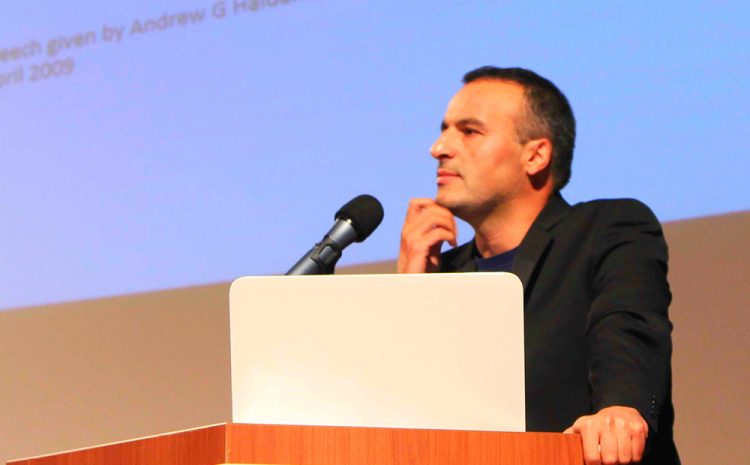
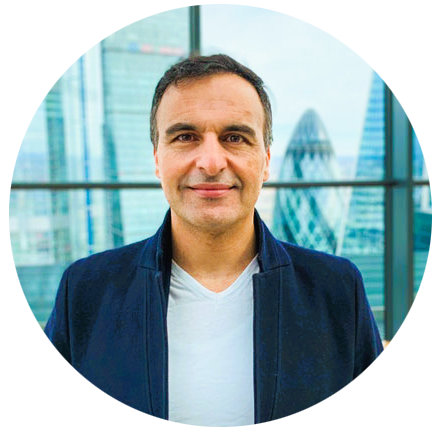
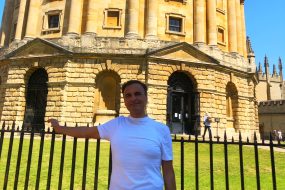
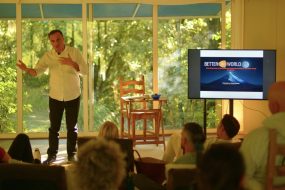


3 replies on “The Architecture of Impact: Foundations for Scaling Purpose Through Systemic Investing”
The Real Person!
Author Kia acts as a real person and passed all tests against spambots. Anti-Spam by CleanTalk.
Truly Amazing
The Real Person!
Author Ehsan acts as a real person and passed all tests against spambots. Anti-Spam by CleanTalk.
Great Article very insightful
The Real Person!
Author Erika acts as a real person and passed all tests against spambots. Anti-Spam by CleanTalk.
I enjoyed thanks